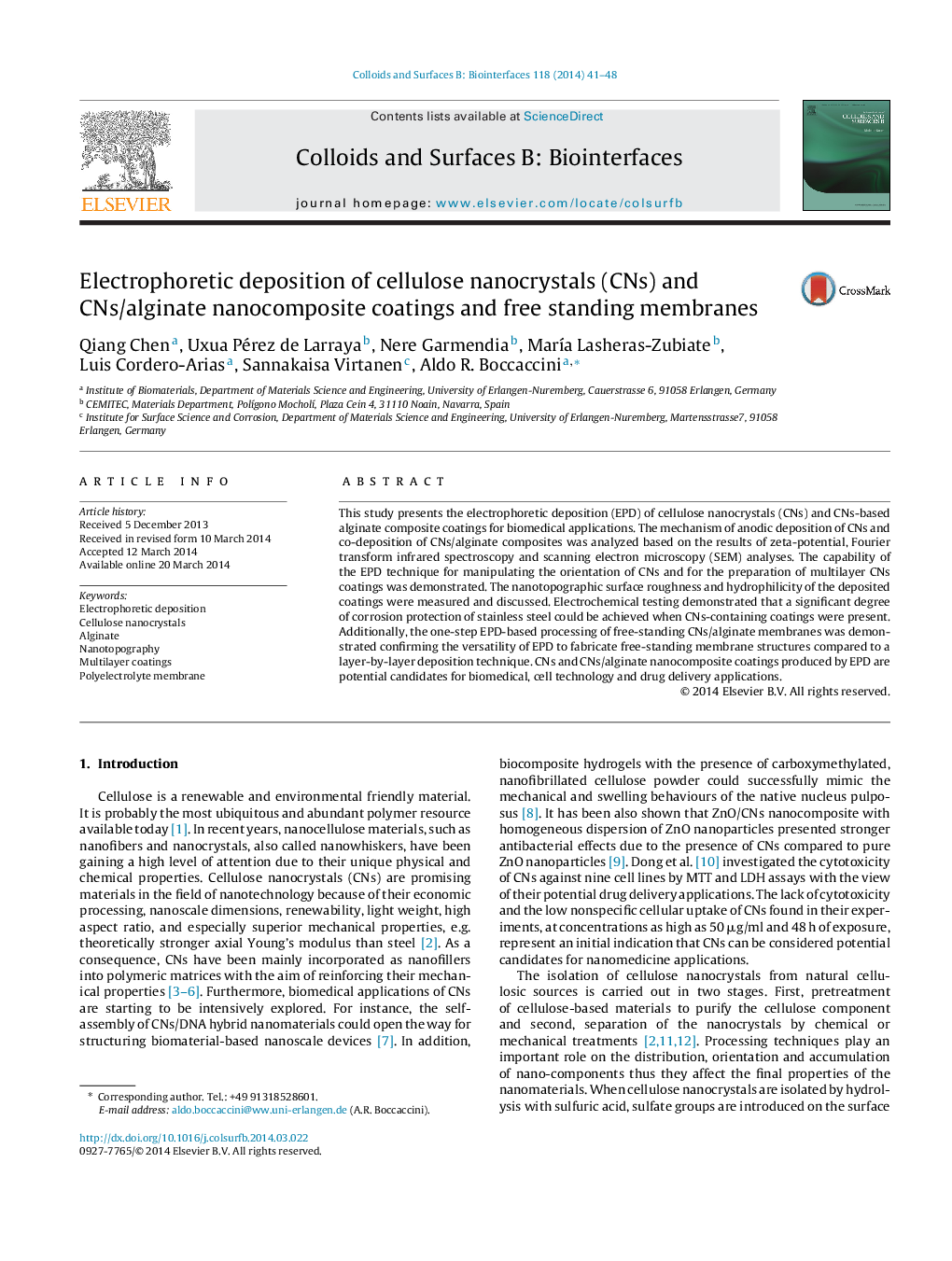| Article ID | Journal | Published Year | Pages | File Type |
|---|---|---|---|---|
| 599666 | Colloids and Surfaces B: Biointerfaces | 2014 | 8 Pages |
•CNs and CNs/alginate nanocomposite coatings were fabricated by EPD.•The co-deposition mechanism of CNs and alginate was experimentally confirmed.•EPD is an effective method for orientation of CNs and for preparation of multilayer CNs coatings.•Significant corrosion protection of stainless steel by CNs-containing coatings.•Free-standing CNs/alginate membranes with uniform thickness (20–30 μm) produced by EPD.
This study presents the electrophoretic deposition (EPD) of cellulose nanocrystals (CNs) and CNs-based alginate composite coatings for biomedical applications. The mechanism of anodic deposition of CNs and co-deposition of CNs/alginate composites was analyzed based on the results of zeta-potential, Fourier transform infrared spectroscopy and scanning electron microscopy (SEM) analyses. The capability of the EPD technique for manipulating the orientation of CNs and for the preparation of multilayer CNs coatings was demonstrated. The nanotopographic surface roughness and hydrophilicity of the deposited coatings were measured and discussed. Electrochemical testing demonstrated that a significant degree of corrosion protection of stainless steel could be achieved when CNs-containing coatings were present. Additionally, the one-step EPD-based processing of free-standing CNs/alginate membranes was demonstrated confirming the versatility of EPD to fabricate free-standing membrane structures compared to a layer-by-layer deposition technique. CNs and CNs/alginate nanocomposite coatings produced by EPD are potential candidates for biomedical, cell technology and drug delivery applications.
Graphical abstractFigure optionsDownload full-size imageDownload as PowerPoint slide
